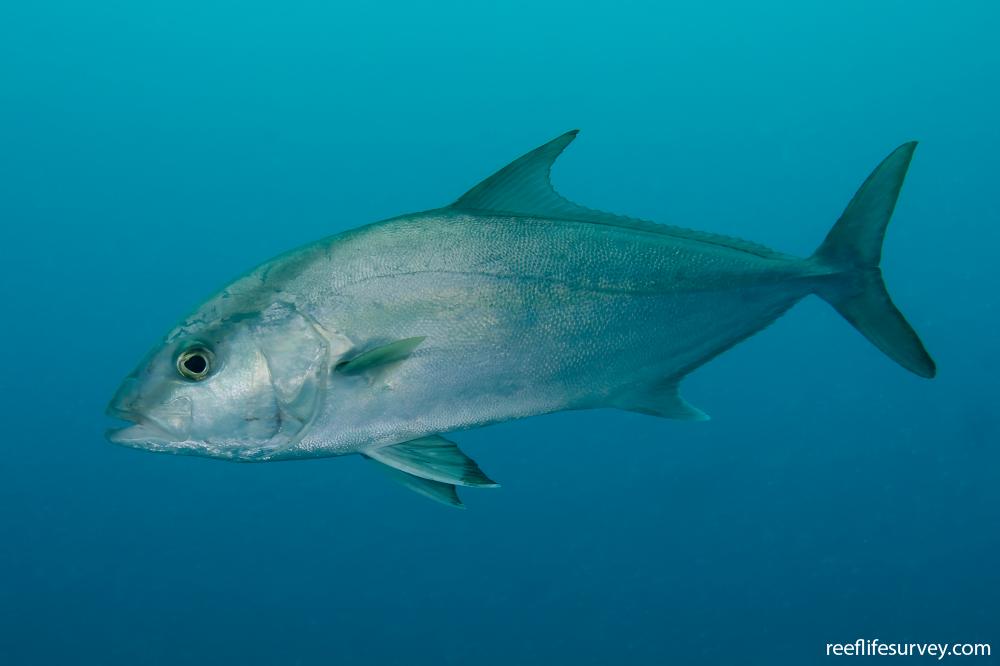Seriola rivoliana
Highfin Amberjack | Almaco Amberjack | Almaco Jack | Amberjack | Crevalle | Deep-water Amberjack | European Amberjack | Falcate Amberjack | Greater Amberjack | Longfin Kingfish | Longfin Yellowtail | Silvercoat JackSimilar Species
Same Genus
Distribution
Temperate Africa, Temperate Australasia, Temperate South America, Temperate northern Atlantic, Temperate northern Pacific, Tropical Atlantic/Caribbean, Tropical Eastern Pacific, Tropical Indo-Pacific
Description
Less steep head than S. hippos (Samsonfish) and deeper body than S. lalandi (Yellowtail Kingfish), dark oblique stripe passing from mouth through eye to front of dorsal fin. Proportionally longer dorsal and anal fin lobes than the very similar S. dumerili (Amberjack), with dorsal fin lobe at least 1.3 (to 1.6) times the length of the pectoral fin. Approach divers with one or two passes. Rarely seen on hotter reefs toward the equator, where they inhabitat deeper depths.
Information
Max Size: 160 cm
Sea Temperature Range: 18.4-30°C
Depth: 5-160m
Habitat Generalization Index: 5.46
Also referred to as the SGI (Species Generalisation Index), this describes the habitat niche breadth of the species. Species with values less than 15 are found in a relatively narrow range of reef habitat types (specialists), while those over 25 may be found on most hard substrates within their range (generalists). Learn more here.
Conservation and Rarity
IUCN Status: Not Evaluated
Occurrence: Infrequent (4.2% of sites)
Occurrence describes how often the species is found on surveys within its distribution. It is calculated as the % of reef sites surveyed by RLS divers across all the ecoregions in which the species has been observed
Abundance: Few (4 per transect)
Abundance is calculated as the average number of individuals recorded per RLS transect, where present.
Edit by: Rick S-S









